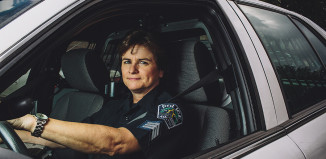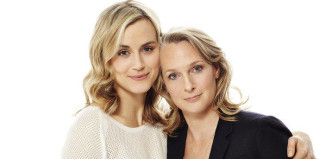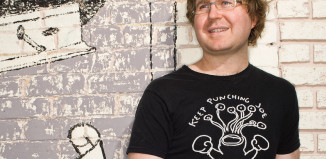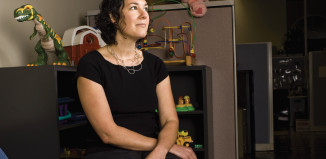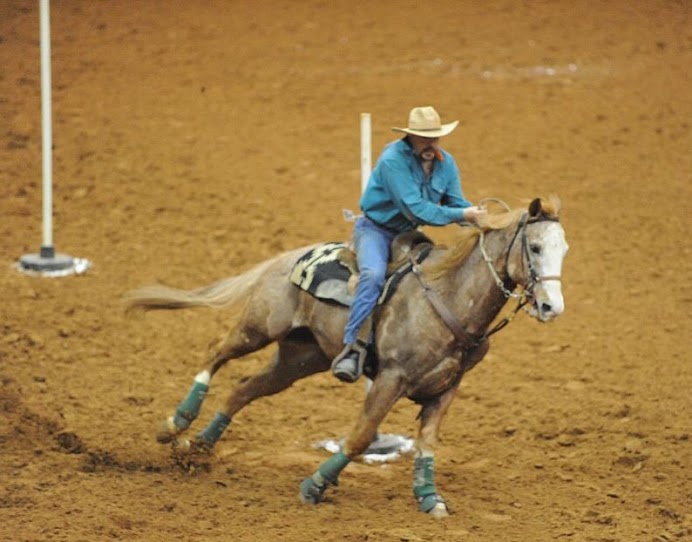
Photography provided by Wade Earp
When the Austin Gay and Lesbian International Film Festival (aGLIFF) kicks off next week, one of the films getting its Austin premiere will be Matt Livadary’s Queens & Cowboys: A Straight Year on the Gay Rodeo. The film documents a year on the International Gay Rodeo Association’s (IGRA) circuit, with cowboy Wade Earp as the focal point of the film. Earp, a relative of the famous gun-slinging Wyatt Earp, is a 48-year-old rancher and rodeo competitor who lives in the Dallas area. Earp is openly gay, and in the film we see his triumphs and challenges, both in the rodeo arena and navigating in a culture that’s not always open-minded when it comes to LGBT cowboys.
How did you get into rodeo competition, and how long have you been competing in the gay rodeo circuit?
I started out back in 1999. IGRA sponsored a dance competition at the Round-Up Saloon in Dallas, and I won. I also won the state competition in San Antonio, and went to the IGRA dance championships the next year in Billings, Montana. So I got involved through a dance competition. I felt like I’d met a new family. The way the dance competitions work, they usually put those on while the rodeo is going on. So if I danced, I couldn’t compete. I finally talked to the rodeo director, and asked if they could change the schedule for barrel racing so I could compete in barrels. I started with one event, in the fall of ‘99, and by January of 2000, I was doing seven events.
I did all 13 of the events at one point, although I retired from bareback broncs in 2011. Too many broken bones, too many injuries from broncs. The body don’t bounce like it used to.
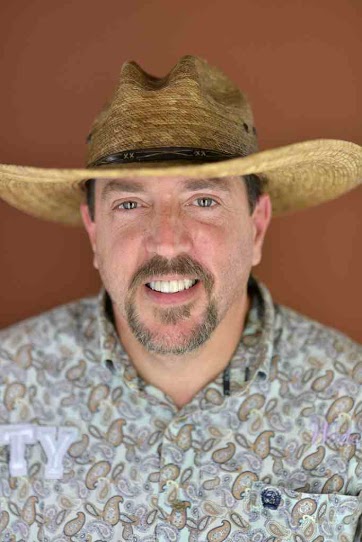 What’s your favorite event?
What’s your favorite event?
I started going to rodeos when I was a child, and I fell in love with barrel racing. Seemed they were running at full-out speed, and I really liked that. It’s like a controlled runaway. I also love the bull riding and bronc riding.
Have you competed in other rodeo circuits?
Farm and ranch clubs host little play day competitions on horseback with steer and bull ridings, and I’ve done some of those, but basically I’ve stayed with the IGRA.
Have you been able to do non-IGRA events as an openly gay cowboy?
No. As IGRA got bigger and as the cowboys got more well known, more and more people would recognize you, and then I came out to some of them. But for the most part when you go to those types of events, it’s not something that’s very open. There’s still a lot of homophobia. As progressive as we think the world’s gotten, there’s so much we have to conquer.
In the film you say “I’m 100 percent cowboy, I just happen to be gay.” Has it been hard to get others to share that perspective, that one person can embody both?
You know, when I was younger, I was very afraid of what people were going to say. But it seems like we can be a little more open, honest with ourselves and with society, and more and more people are accepting.
What was it like having a year of your life documented for the film?
I have to say, I just told him I’d be happy to let him follow me. I never knew I’d be the main focal point until I saw the final cut. It was – I still get a little emotional about it. I’ve been interviewed so many times, and you hope that what you say and what they write is positive, and moves us into a better state of mind.
How was it to see the film for the first time?
When I saw it, I was overwhelmed. It was tough to watch. It’s brutally honest. You tell the world your life…I opened up about my sexuality and my HIV status. I couldn’t watch it all at once. I could watch 20 or 30 minutes at a time, and then I’d have to turn it off. A lot of that stuff I talked about took place over a period of years: one full year of filming, and then it took him [the director] almost three years to edit and go back in and do more filming. So to see it all at once was a little emotional. It was tough, but also very positive. I couldn’t be more proud.
I have had so much positive response. So many of the film groups that have seen it have been so open and welcoming. I’ve had more straight people say, “Thank you for sharing your story, you’ve opened my eyes.” In the end, that’s what we wanted. We didn’t start that way, but in the end, what a cool tool it is to teach everyone.
 What do you most hope people will take away from the film?
What do you most hope people will take away from the film?
I just wish so much that people could get past the gay thing, the straight thing, the woman thing, the male thing, that it would be about people. Just accepting people for who they are, what they are. In life, generally, that’s what we’re all hoping for and looking for. We touched on some very big subjects. It’s not really a gay movie, it’s a movie about life. It’s our emotions, our struggles, all of that.
I also hope this can help someone who’s in a small town and who thinks they’re the only one in the world like they are, or they’re being shunned – I hope this lets them know there are people who care and who can help.
You probably hear this question more than you’d care to, but we have to ask – what’s your relation to Wyatt Earp?
The three brothers at the OK Corral were Wyatt, Virgil, and Morgan. I’m from Virgil’s descendants. Wyatt never had kids – it was the only time he shot blank.
What do you think it would have been like to be a cowboy who happens to be gay back in Wyatt Earp’s day?
Oh gosh, we saw a little of that played out in Brokeback [Mountain]. It would have been tough. No if’s, and’s, or but’s about it.
Queens & Cowboys: A Straight Year on the Gay Rodeo screens on Sat., Sept. 13 at 2:35 pm at Alamo Drafthouse South Lamar. Order tickets to the film or attend the entire festival with a festival badge.
Interview by Kate Harrington
Queens & Cowboys: A Straight Year on the Gay Rodeo Trailer


















